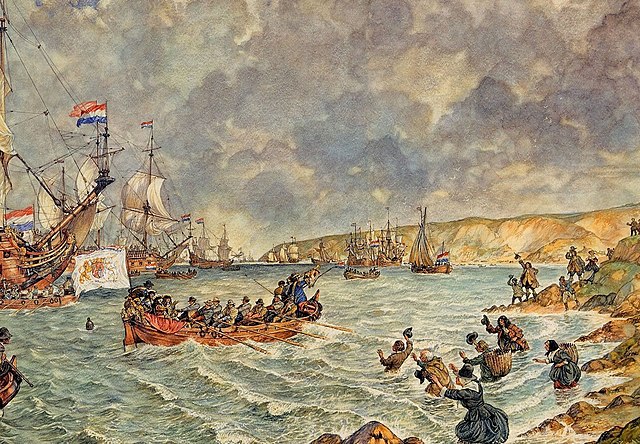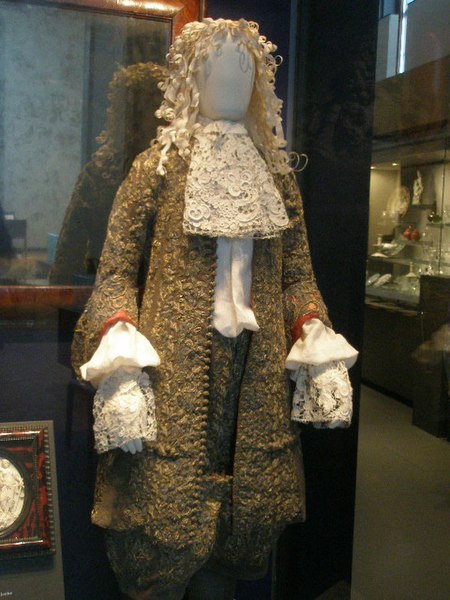The Glorious Revolution is the sequence of events that led to the deposition of James II and VII in November 1688. He was replaced by his daughter Mary II and her Dutch husband, William III of Orange, who was also his nephew. The two ruled as joint monarchs of England, Scotland, and Ireland until Mary's death in 1694. The Revolution itself was relatively bloodless, but pro-Stuart revolts between 1689 and 1746 caused significant casualties, while the political movement known as Jacobitism persisted into the late 18th century. William's invasion was the last successful invasion of England.
The Prince of Orange landing at Torbay as depicted in an illustration by Jan Hoynck van Papendrecht
James II & VII, King of England, Scotland and Ireland, by Godfrey Kneller, National Portrait Gallery, London
James's attempts to allow tolerance for English Catholics coincided with the October 1685 Edict of Fontainebleau revoking it for Huguenots.
The Seven Bishops prosecuted for seditious libel in 1688
James VII and II was King of England and Ireland as James II and King of Scotland as James VII from the death of his elder brother, Charles II, on 6 February 1685. He was deposed in the Glorious Revolution of 1688. He was the last Catholic monarch of England, Scotland, and Ireland. His reign is now remembered primarily for conflicts over religious tolerance, but it also involved struggles over the principles of absolutism and the divine right of kings. His deposition ended a century of political and civil strife in England by confirming the primacy of the English Parliament over the Crown.
Portrait by Peter Lely
Henri de La Tour d'Auvergne, Viscount of Turenne, James's commander in France
James and Anne Hyde in the 1660s, by Sir Peter Lely
Wedding suit of James II, 1673, in the Victoria and Albert Museum








